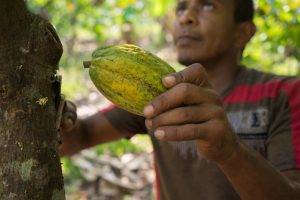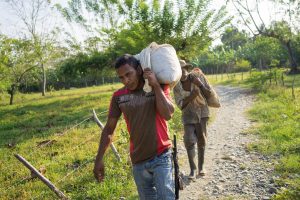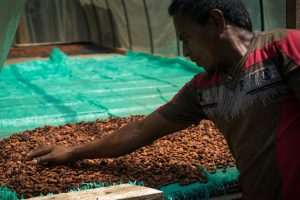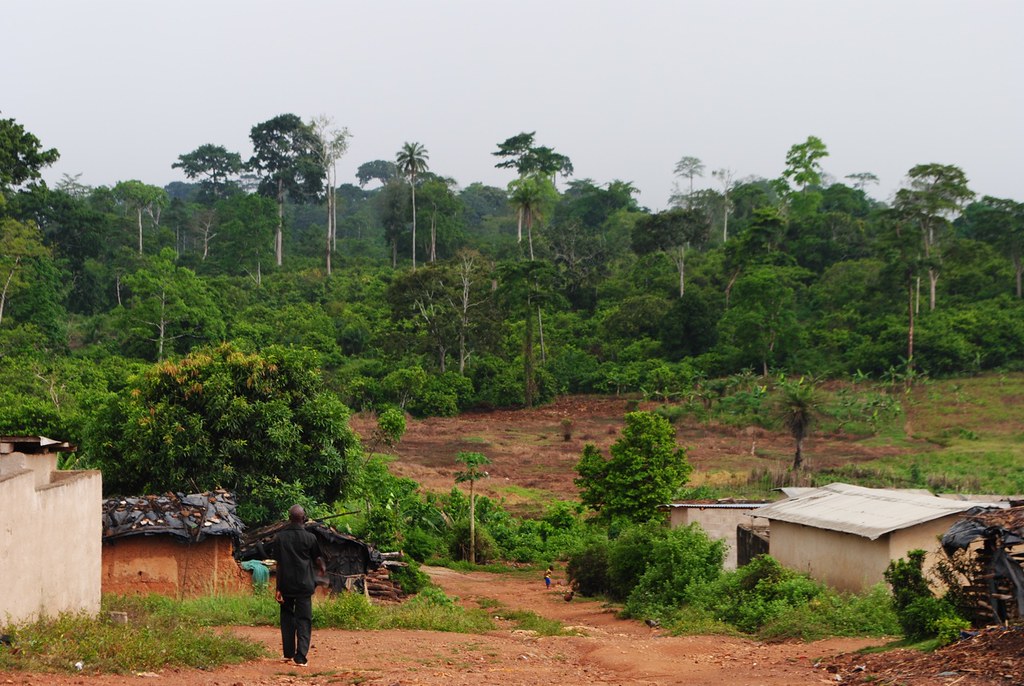The crisp dawn unveils a serene landscape of cocoa farms, an emblem of thriving nature and human diligence. Yet, lurking beneath the tranquility is a silent adversary – climate change. These verdant fields that yield the essential ingredient for the world’s chocolate are now at the cusp of a climatic siege. The ensuing narrative unveils the complex tapestry of challenges climate change bestows upon cocoa farming, a narrative where each contour reflects a delicate balance between cocoa cultivation and climate vicissitudes.
The Cocoa Belt and Climate Sensitivity



Nestled between the Tropics of Cancer and Capricorn, the Cocoa Belt unfurls across the globe, housing the fertile grounds where cocoa trees flourish. Regions within this belt – West Africa, Southeast Asia, and South America, are bestowed with the perfect concoction of climatic conditions conducive for cocoa cultivation. The essence of cocoa farming is intertwined with the rhythm of climate, wherein the trifecta of temperature, rainfall, and humidity plays a quintessential role.
- Temperature: Cocoa trees thrive in warm temperatures, typically between 68 to 86°F, where the warmth nurtures the beans to fruition.
- Rainfall: A bountiful rainfall, ranging from 40 to 100 inches annually, quenches the cocoa trees’ thirst, driving a cycle of robust growth and abundant yields.
- Humidity: The high humidity within these regions, usually around 80%, cradles the cocoa trees in a moist embrace, an essence for its flourishing.
Climate Change Trends and Cocoa Production
As the specter of climate change looms, its tendrils are subtly yet significantly altering the climatic demeanor of the Cocoa Belt. The primary harbingers of change come in the guise of rising temperatures and shifting precipitation patterns.
- Rising temperatures: The escalating mercury not only threatens to push the temperature beyond the cocoa trees’ comfort zone but also escalates evapotranspiration rates, imposing a stress on the water resources.
- Altered precipitation patterns: The whims of rainfall, now more erratic and often scant, disrupt the harmonious water rhythm essential for cocoa cultivation.
The ramifications of these climate alterations on cocoa farming are profound and multi-dimensional:
- Shifts in suitable cultivation zones: The warming climate is nudging the suitable zones for cocoa cultivation uphill, a shift that is not always feasible for the farming communities.
- Changes in harvest quality and quantity: The altered climate regime impacts the growth cycle of cocoa, potentially leading to reduced yields and compromised bean quality. The rhythm of seasons, once a reliable ally, now echoes with the uncertainty of climate change.
The journey of cocoa from farm to chocolate bar is strewn with climatic hurdles, each with the potential to rewrite the narrative of cocoa farming. As we delve deeper into this narrative, the imperative for robust adaptive and mitigative strategies unveils itself, a beacon towards safeguarding the legacy of cocoa farming against the whims of a changing climate.
Adapting to the New Climate Reality
As climate patterns veer away from historical norms, the cocoa sector finds itself at a crossroad. The path towards adaptation is not just a choice, but a necessity to sustain the chocolate industry’s lifeline. Various adaptation strategies are weaving into the fabric of cocoa cultivation:
- Drought-resistant cocoa varieties: Research is propelling the development of drought-tolerant cocoa varieties, a genetic renaissance aimed at insulating cocoa farms from the drying whims of climate change.
- Agroforestry practices: Agroforestry, a marriage between agriculture and forestry, is emerging as a robust adaptation strategy. By integrating trees within cocoa farms, it not only provides a cooling shade but also enhances soil moisture and fertility.
- Improved farm management practices: Refined farming practices, encompassing efficient water management and organic fertilization, are building a fortress of resilience around cocoa farms.
The Economic and Social Ripple Effects
The economic waveform generated by climate-induced challenges in cocoa farming resonates far beyond the farms, rippling through the local and regional economies. The financial strain trickles down to the individual cocoa farmers, often tightroping on the edge of poverty.
Simultaneously, the social fabric of cocoa farming communities is undergoing a transformation. Climate adversity is not just a meteorological phenomenon but a catalyst for social change, often ushering in migration and a shift in livelihoods.
The Global Response and Future Outlook
The global orchestra of change is playing a tune of hope and action. Various actors, including international organizations, national governments, and industry stalwarts, are orchestrating initiatives to combat climate change and fortify cocoa farming communities.
- Technological leaps: Emerging technologies, including precision agriculture and climate modeling, are offering a glimpse into a future where cocoa farming coexists harmoniously with climate dynamics.
Bridging the Gap Between Cocoa and Climate Resilience
The narrative now circles back to a call for action, a collective endeavor to bridge the chasm between cocoa cultivation and climate resilience. The roadmap towards a resilient cocoa sector demands a trifecta of robust research, enlightened policy frameworks, and an awakened consumer conscience.
The call reverberates for more investment in research to foster drought-resistant cocoa varieties, agroforestry models, and climate-smart farming practices. Concurrently, policy frameworks need to be sculpted to provide a nurturing environment for these adaptation strategies to take root and flourish.
Lastly, as consumers, the power of choice is a potent tool. By opting for ethically sourced and sustainably produced chocolate, each consumer becomes a drop in the ocean of change, propelling the cocoa sector towards a horizon of resilience and sustainability amidst a changing climate. The story of cocoa is not just about a beloved sweet treat, but a narrative intertwined with the lives of farmers, the breath of forests, and the health of our global climate.

